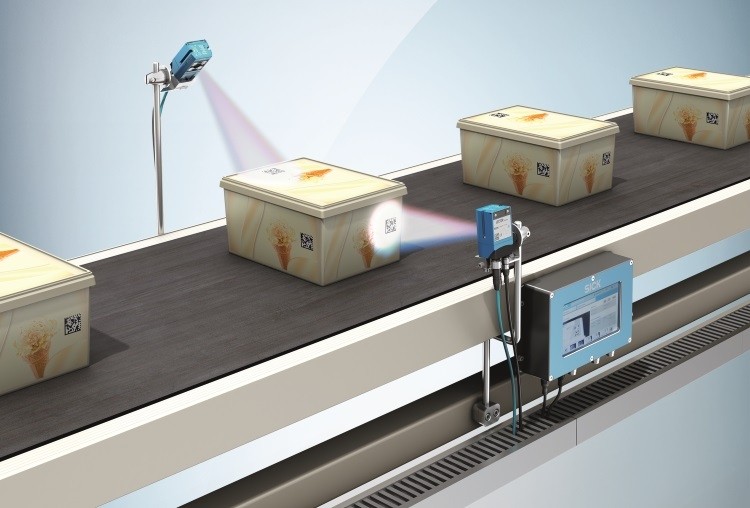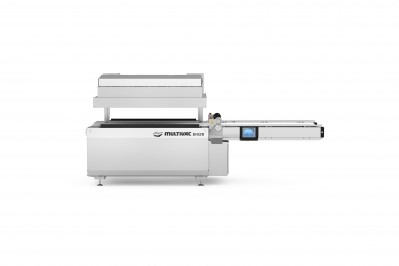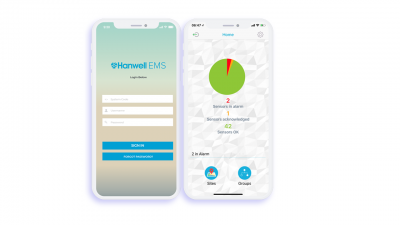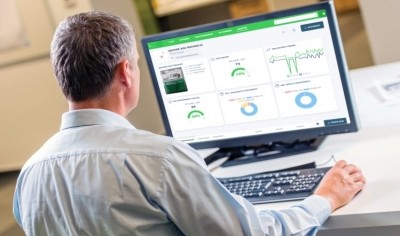Equipment in-depth
Detection and inspection: a vision of the future

A factory full of connected devices working in sync to address problems as and when they occur may seem a long way off in some areas of food manufacture – but for detection and inspection equipment at least, it’s becoming more of a reality with each passing year.
“The dream of the smart factory, with real-time bi-directional communication to field level devices, is now more realisable than ever,” says Jan Nieswandt, product marketing manager at Omron Europe.
Omron’s detection and inspection equipment ranges from standalone code readers to multi-line vision systems. “Sensors and actuators can communicate more than simple on/off signals or analogue ranges – they can now provide advanced status and diagnostics information to the controller. The controller can also change the sensor’s parameters, creating the ultimate in flexible manufacturing and Industry 4.0.”
Aided by real-time connectivity, the latest models also allow food and drinks manufacturers to enhance quality and traceability, while reducing contamination and food waste. Together, the benefits translate into important cost savings.
When it comes to traceability, higher-level data handling is becoming increasingly important to the modern-day food manufacturer, according to Nieswandt. “Knowing which individual product ended up on which tray and was shipped to which shop, something previously only seen in pharmaceutical manufacturing, has become more and more relevant for food and beverages.”
Manufacturers continuing to monitor machine performance manually or on a machine-by-machine basis are operating inefficiently, says Phil Brown, managing director at Fortress Technology Europe.
Fortress supplies an automated record keeper, Contact Reporter, and a data collection system for monitoring the performance of multiple metal detectors through a single web-based gateway, Remote Management Software (RMS).
“RMS allows food factories to manage operations from anywhere in the world from smartphones, tablets and laptops,” says Brown. “Once the software is installed, authorised users simply log into the RMS browser and can troubleshoot a performance issue without having to be physically in front of the metal detector.”
As well as offering quality assurance, the RMS system allows manufacturers to keep on top of traceability and HACCP food safety compliance.
Connectivity
Sick UK, meanwhile, launched a new Telematic Data Collector last October, which it heralds as leading the way forward for sensor connectivity in Industry 4.0.
The remote-access plant management tool collects data from multiple sensors in automated production environments for real-time monitoring, analysis and configuration of SMS text alarms. And Sick’s AppSpace software development platform allows flexible customisation of applications on Sick-programmable sensors and devices.
“The real benefit of Industry 4.0 is that the control system is fully connected to ‘see’ the sensor as a distinct and locatable entity, so food and beverage processes are given access to a full range of diagnostic capabilities not available previously,” says Neil Sandhu, national product manager at Sick UK.
Sick reports rising demand for ‘plug and play’ systems encompassing 3D vision inspection for quality control, such as its TriSpector 1000 combining smart camera technology and real-time processing software.
“It can check presence, position, labels, contents and absence, dimensioning and height, orientation and fill levels,” says Sandhu.
“We are also seeing increased use of robots and cobots. The TriSpector 3D vision camera has recently been deployed in a line that enables continuous in-line product detection to be easily customised for robotic belt picking applications for the packaging industry.”
Sacmi, a supplier of inspection systems for packaged goods, believes the new frontiers of quality control are based on 3D imaging, deep learning and artificial intelligence. Its ‘all-in-one’ vision system, Ulysse, uses a patented Chrometriq-100 illuminator to inspect the insides of metal lids, and can also be used for quality control of capsules, containers, labels and preforms.
Waste reduction
The reduction of unnecessary waste is another big driver of investment in detection and inspection kit. Mettler-Toledo’s X34 X-ray inspection system, launched last June, is aimed at identifying very small contaminants including metal, glass, high-density plastic, mineral stone and calcified bone fragments in packaged foods.
Inbuilt ContamPlus inspection software helps manufacturers achieve a zero false reject rate (FRR), says Paul Lerigo, product inspection specialist at Mettler-Toledo. “By lowering FRR, manufacturers can achieve higher production outputs without adding extra lines, boosting productivity and profitability.”
However, Brown at Fortress Technology says that while retailers and manufacturers are making strides to reduce avoidable food waste, even more can be done.
“Under the UK Courtauld 2025 Commitment, three signatories reported a 74% increase in the amounts being redistributed between 2012 and 2014,” he says. “Nevertheless, it can be a juggling act for food processors to maintain product integrity and food safety while keeping avoidable waste to a minimum.”
Reducing false rejects, which can be common on lines inspecting wet products such as dairy, ready meals, dips, meat, poultry, fish and bakery, can significantly reduce waste.
Utilising software algorithms to analyse signal data has improved the accuracy and reliability of metal detection equipment, says Brown – technology Fortress has applied to the development of its Interceptor DF (Divergent Field), launched at Pack Expo 2018.
Using multiple field patterns to inspect products horizontally and vertically simultaneously allows the Interceptor DF to identify, for example, ultra-thin contaminants in low side profile foods, such as snack bars, cookies and confectionery.
Demand for Fortress Technology’s pipeline and gravity systems has more than tripled over the past year, says Brown, as manufacturers shift inspection away from the most expensive part of production. Pushing inspection to the end of the line can result in wastage of an entire batch, he claims, whereas moving it before processing and packing can reduce the loss.
Following a number of high-profile deaths from allergens, Lerigo at Mettler-Toledo expects an increase in the use of industrial vision systems. “These versatile machines can check the positioning, content and print quality of labels on high-speed lines in real-time,” he says.
Meanwhile, he predicts that detection and inspection technologies are likely to play an increasing role in the battle against food fraud.
Checkweighers: why correct specification matters
For fixed-weight products, a checkweigher is more than just an inspection point at the end of a line. In situations where giveaway equals lost profit, the accuracy of a checkweigher is crucial, argues Matthew Taylor, inspection and weighing product manager at Multivac UK.
A common misconception is that all checkweighers are specified the same, he says.
“The correct specification of an inspection machine may or may not include additions such as separation conveyors or correct reject methods, both of which are fundamental for an efficient production line.”
According to Taylor, Multivac has developed specification software that stores databases of all of its packaging machinery and convergers. “This information is key when considering the physical integration of one machine to another,” he explains.


















